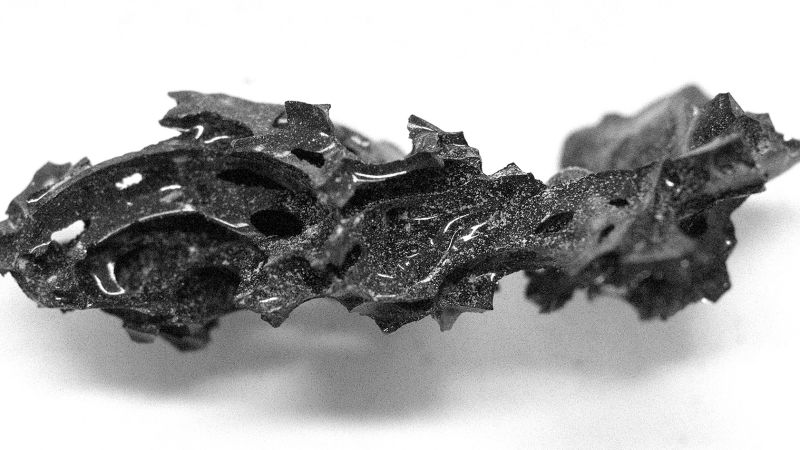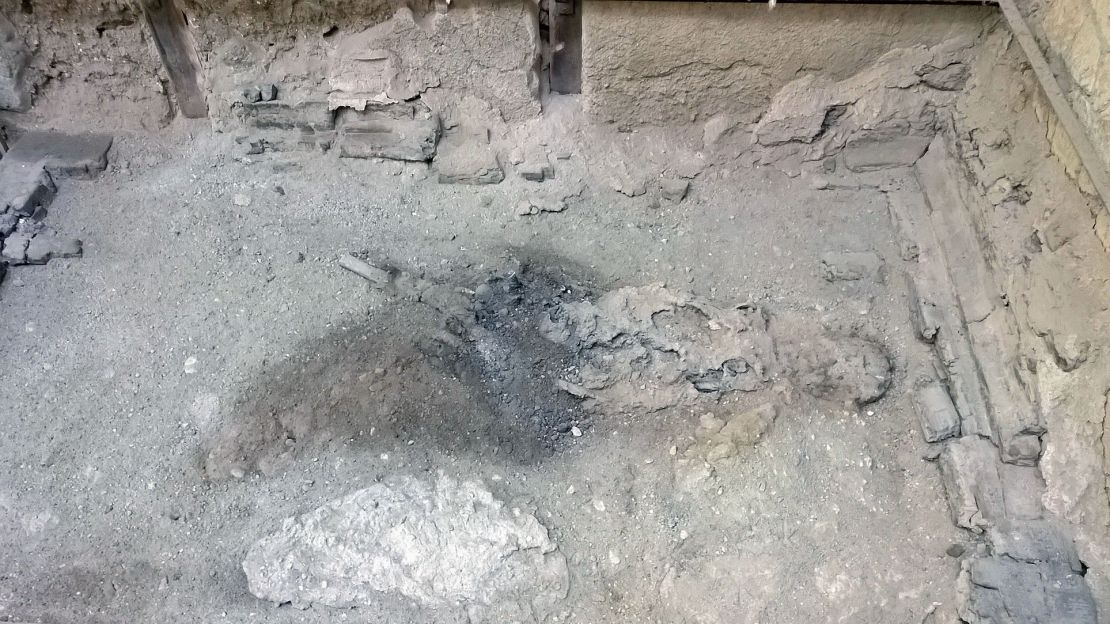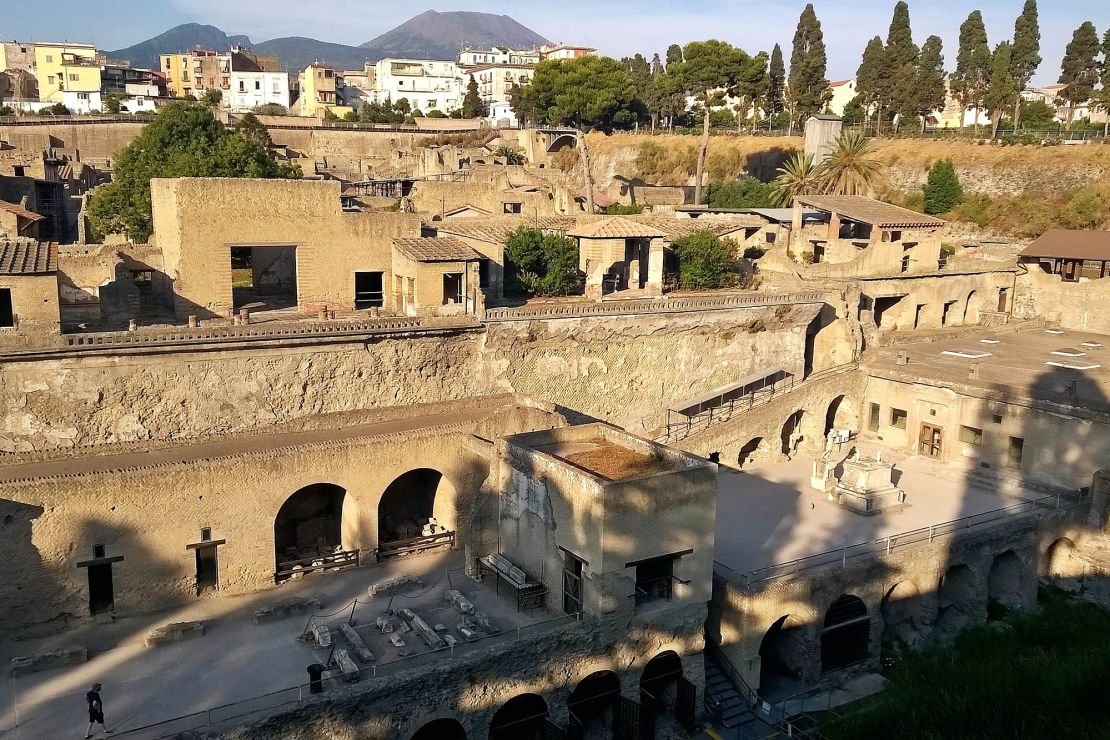
Subscribe to CNN’s Wonder Theory science newsletter. Discover the cosmos with updates on exciting breakthroughs, scientific progress, and much more.
CNN
—
Glass is rarely formed from organic materials naturally. However, in 2020, scientists unearthed a dark, glassy substance within the skull of a victim who perished during the catastrophic eruption of Italy’s Mount Vesuvius in AD 79.
Researchers have now pieced together the events that probably resulted in the individual’s death and the intriguing formation of the glass, believed to represent fossilized brain tissue.
Discovered in the ancient coastal city of Herculaneum, which was devastated alongside Pompeii by the eruption, the remains belong to a young man found lying facedown on a bed buried deep under layers of volcanic ash.
Recent analysis of glass fragments found in the skull and spinal cord indicates that the individual’s tissues must have been subjected to temperatures exceeding 510 degrees Celsius (950 degrees Fahrenheit) before cooling rapidly, a phenomenon known as vitrification.
“The conversion of any liquid into glass occurs through quick cooling rather than rapid heating,” noted Guido Giordano, a volcanologist at Roma Tre University who led the study published on Thursday in the journal Scientific Reports.
“Volcanic glass, known as obsidian, forms when lava is cooled rapidly, such as when it flows into water,” Giordano explained.
Nonetheless, the pyroclastic flows that surged from Vesuvius, consisting of rapidly-moving volcanic materials and hazardous gas, could not have caused the brain tissue of this young man to vitrify, Giordano emphasized. The temperatures of these flows did not exceed 465 degrees Celsius (869 degrees Fahrenheit), and they would have cooled gradually.
Instead, based on insights from recent volcanic eruptions, it is theorized that an extremely hot ash cloud which dispersed quickly may have created the optimal conditions for the vitrification of human brain tissue. However, the specific circumstances required for this process have raised questions among experts in the field.

The individual’s skull and spine likely shielded the brain from total thermal destruction, facilitating the formation of the unique organic glass fragments.
Unlike pyroclastic flows, which remain close to the ground, an ash cloud is airborne. Nevertheless, Giordano explains that the two are interconnected.
“An ash cloud is a less dense part of the pyroclastic flow. It typically forms around the perimeter, both above and to the sides, where the bulk of the material resembles an avalanche or landslide, with the outer layer consisting of finer ash particles,” he clarified. “These clouds can reach lethal temperatures.”
To achieve their results, Giordano and his team meticulously cooled and warmed shards of the glass extracted from the skull and spine to identify the heat and subsequent cooling required for vitrification. They determined that the brain tissue turned to glass at a minimum temperature of 510°C (950°F).
“The ash cloud led to instantaneous death for the victims, as they were engulfed in a plume that likely reached temperatures of around 510 to 600 degrees Celsius,” Giordano remarked.
Below the layers of ash and debris that encapsulated Herculaneum lies a stratum of fine volcanic ash possibly deposited by the ash cloud, according to Giordano.

Experts warn that the vitrification of soft tissues is “incredibly unlikely.” Alexandra Morton-Hayward, a forensic anthropologist at the University of Oxford, expressed doubts about whether the glassy material originated from brain tissue. Morton-Hayward has created a comprehensive archive of over 4,400 brains discovered by archaeologists, though she did not participate in this research.
She noted that organic tissues, largely made of water, can only undergo vitrification through rapid cooling to extremely low temperatures, far below 0°C (32°F) — a method known as cryopreservation.
Cryopreservation involves cooling organs with liquid nitrogen to inhibit ice formation, preserving them in a solid-like state while retaining their molecular configuration. “I’m not convinced this artifact is a rare exception to this established rule,” she remarked.
Giordano insists that there is no doubt about the organic origin of the glass. Previous studies have demonstrated the preservation of neurons and proteins within the individual’s brain, he noted.

Related Posts
First Private Spacecraft Set for Moon-Beyond Journey Faces Challenges
The first commercial spacecraft to venture beyond the Moon is currently en route to deep space, yet the mission is encountering unidentified challenges as the team strives to establish communication…
Impending Ice Age Threatened by Climate Change Chaos, According to Analysis
A team of researchers believes they can forecast the timing of the next ice age on Earth, but there’s no need to be alarmed—it’s not expected to occur for a…








